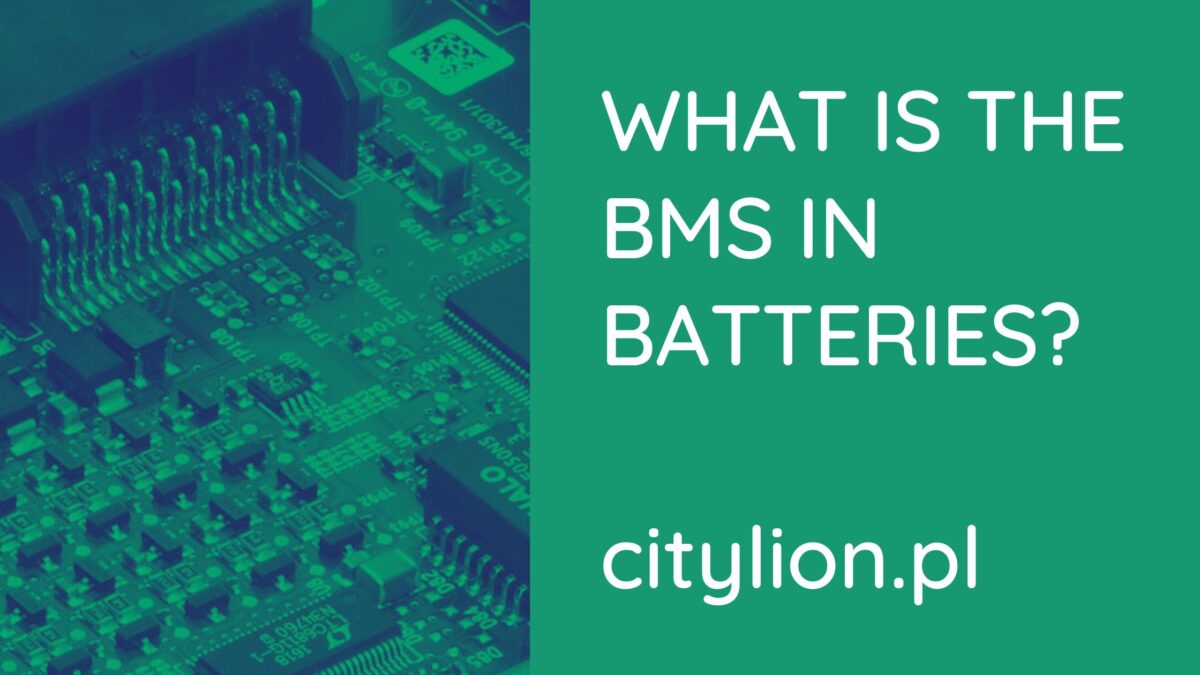What is BMS in Batteries and How Does It Work?
In lithium-ion and lithium-polymer batteries, Battery Management Systems (BMS) perform various functions, with the most important being protecting the battery from overcharging and overheating. However, not everyone knows that the proper functioning of these systems also affects the battery's lifespan. Check now what you need to know about BMS systems in batteries.
In lithium-ion and lithium-polymer batteries, Battery Management Systems (BMS) perform various functions, with the most important being protecting the battery from overcharging and overheating. However, not everyone knows that the proper functioning of these systems also affects the battery's lifespan. Check now what you need to know about BMS systems in batteries.

3 February 2024

City Lion powers European electromobility!
City Lion is the leading producer of batteries for electric vehicles in the EU.
Our batteries power the vehicles of thousands of people across Europe.
Batteries are formed by connecting cells (such as lithium-ion cells) into packs, allowing the construction of modules with practically any configuration. However, the key issue when using these batteries, similar to lithium-polymer batteries, remains the appropriate charging and operating parameters. That’s why BMS systems are an integral part of such batteries.
How Does the BMS System Work?
BMS stands for Battery Management System, which is a battery management system. Its operation can be compared to the functioning of a brain, which, based on collected data, makes decisions regarding the handling of individual cells. In this way, it protects the battery not only from overheating but also from excessive exploitation.
In practice, the BMS system monitors key parameters of the cells. If the battery consists of several, or even hundreds of cells, a dedicated BMS system controls each of them individually. Based on the information obtained, the Battery Management System manages the charging and discharging of cells, and it can also balance them, as discussed later in the text.
In addition, the BMS system communicates with the device to which the battery is connected, providing information about its charge level or condition.
Functions of Battery Management System Systems
The functions of BMS systems allow for safe and efficient use of batteries, both during discharging and charging. For this purpose, the Battery Management System:
- monitors the voltage of individual cells in the module,
- monitors the battery temperature,
- protects against overcharging and excessive discharging,
- protects against too high and too low charging currents,
- can balance individual cells,
- protects against short circuits,
- provides SoC/SoH data (State of Charge – charge level; State of Health – battery health),
- limits the self-discharge of an unused battery,
- enables communication with powered devices to optimize the battery discharging process.
All Types of BMS Systems
Although BMS systems are almost as common as lithium-ion batteries, not everyone knows that various types are used. We have Battery Management Systems installed outside the batteries and in the battery module (usually positioned above the cells).
The latter solution is most often used when the battery is removed from the device for charging or is transferred between devices. BMS in electric bicycle batteries and electric scooter batteries is enclosed in the battery housing.
In addition, BMS systems are also divided based on their operation into passive and active. The differences between these types are easiest to explain using the example of cell balancing.
How Does BMS Balance Cells?
Balancing, or equalization, proves necessary for modules consisting of at least three cells. Due to the fact that even cells from the same manufacturer may differ in capacity, impedance, or temperature characteristics, they usually reach different charge levels. This affects the total battery capacity: in simple terms, the battery is as capacious as its weakest cell. Therefore, special balancing circuits are used, which balance the charge levels of all cells. These circuits, included in BMS systems, can operate passively or actively.
Passive Cell Balancing
Passive cell balancing systems are built, among other things, with a microcontroller that, using an A/C converter connected through a multiplexer to each cell, monitors its voltage. When it significantly exceeds a set level, the cell is connected to an internal resistor for discharge. This process will last until the overcharged cell reaches the voltage of the remaining cells. Then, charging the entire battery is resumed.
Passive balancing has low efficiency and additionally limits the total battery capacity because it is necessary to adjust the charge level of cells to the capacity of the “smallest” one. Moreover, passive balancing operates only during battery charging, so it does not protect the battery during operation or during self-discharge, which naturally occurs in an unused battery.
Active Cell Balancing
Instead of discharging (losing) excess charge on a resistor, in active balancing systems, it is transferred to other cells using transistor keys connected to an inductive coil, which is the secondary side of the transformer.
In this case, the reduction in voltage occurs by connecting the overcharged cell to the secondary winding, resulting in the induction of voltage in the primary winding. Successive transistors connect it to undercharged cells.
Active cell balancing has an efficiency of about 85% and operates both during battery charging and usage, as well as when it is not being used.
BMS — Answers to Frequently Asked Questions
Below are answers to frequently asked questions about BMS systems. Check if they resolve your doubts.
How is BMS different from a balancer?
The BMS system consists of many modules that enable the realization of its functions. One of them can be a balancer (passive or active).
Is BMS necessary in a battery?
Yes. The Battery Management System is necessary for the safe and maximally efficient use of lithium-ion batteries.
When does BMS balance cells?
Passive cell balancer in the BMS system balances cells only during battery charging. An active balancer can balance cells also during battery usage and when it is not being used.
When does BMS cut off?
BMS primarily cuts off the battery in two cases: when during charging any of the cells is close to overcharging, and during battery usage, protecting it from excessive discharging. The BMS system can also interrupt charging due to detecting a short circuit or excessive battery temperature.
This is what you need to know about BMS systems in lithium-ion batteries! They protect your battery from overcharging and extend its lifespan.
City Lion powers European electromobility!
City Lion is the leading producer of batteries for electric vehicles in the EU.
Our batteries power the vehicles of thousands of people across Europe.

I have been co-creating City Lion since December 2019 and have been involved with electric vehicles since 2013. My mission is to support the development of electromobility, which will help free the world from emissions, pollution, and noise. Feel free to contact me via LinkedIn.



